
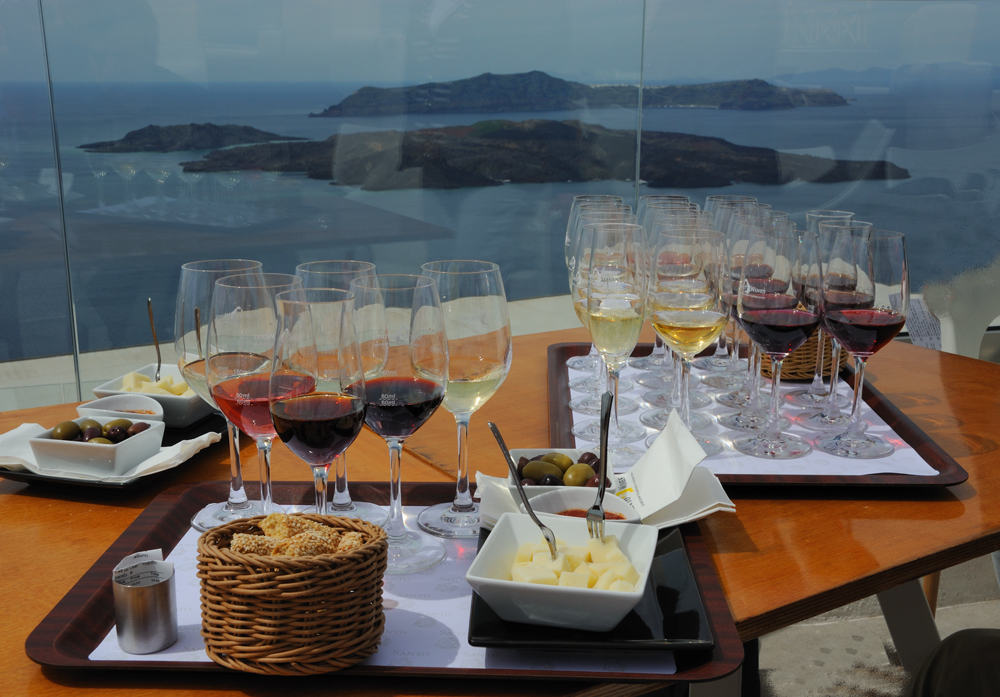
For a comprehensive exploration of Greek viticulture, peruse the insights shared here. Now, let’s immerse ourselves in the captivating world of Santorini, an Aegean Island boasting a vinous legacy that traces its roots back to antiquity.
The inception of winemaking on Santorini, like in other parts of Greece, dates back approximately 5000 years. However, Santorini stands apart, basking in a more fortuitous historical backdrop for its viticulture. During the Crusades Wars, the island fell under the dominion of Venice. Venetian rule saw the islanders take charge of winemaking, orchestrating its exportation into Europe, with a notable focus on Italy. Wines from Santorini, particularly the distinctive Vinsanto variant, ascended to fame across the European continent.
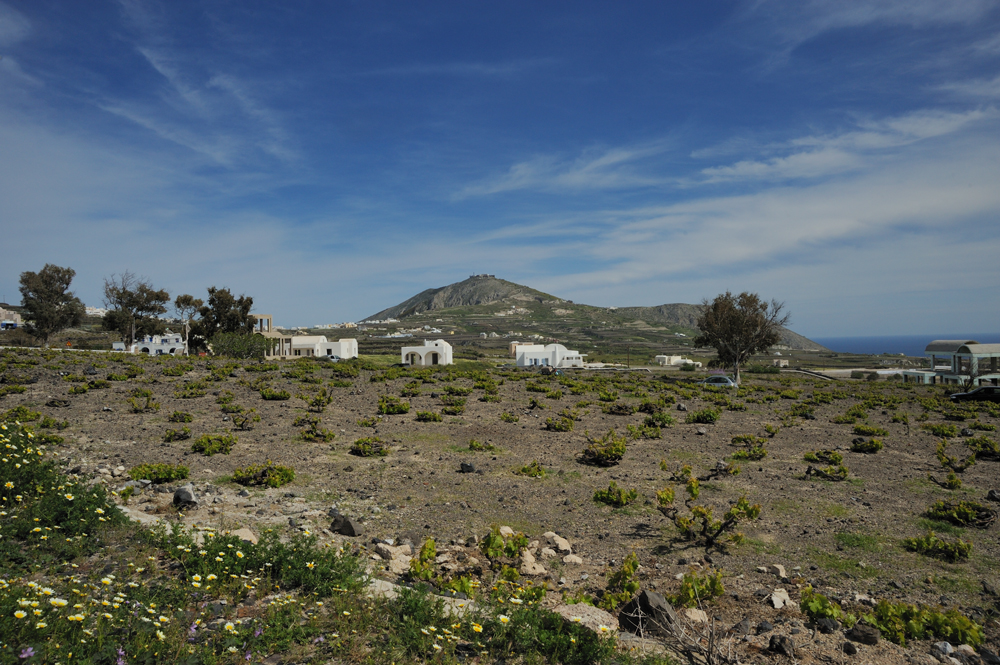
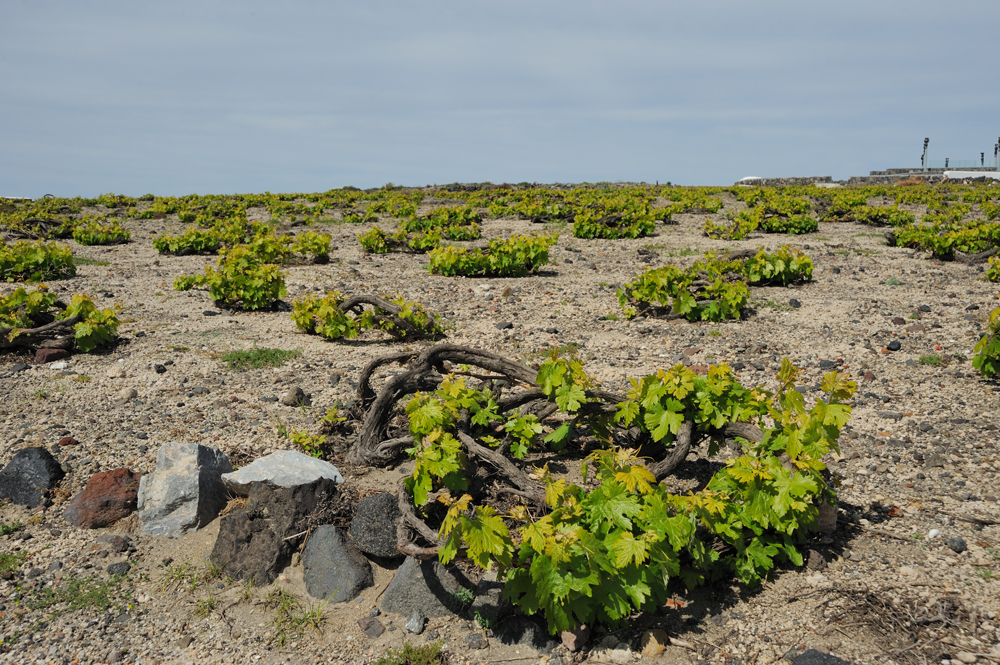
During the era of the Ottoman Empire, when Greece grappled with stringent Muslim restrictions on alcohol and faced a decline in vinicultural expertise, Santorini secured a distinctive privilege. The island obtained special permission for wine production and trade due to a unique alignment of interests. The Russian Orthodox Church designated Santorini wine as the official sacramental wine, leading to regular purchases. Simultaneously, Turkey, desiring amicable trade relations with Russia, facilitated this arrangement.
In contemporary times, Santorini’s unique vines have attracted the attention of seasoned winemakers. Paradoxically, the very prosperity that has turned Santorini into a sought-after sea resort poses a challenge to its viticultural legacy. The surge in land prices has resulted in the reduction of vineyard territories. The looming threat is evident, and only the sustained interest of tourists in fine wine might serve as a bulwark against the complete erasure of these exceptional vineyards.
The geographical tapestry of Santorini is sculpted by one colossal force of nature — a massive volcano. A cataclysmic eruption in 1500 BCE not only reshaped the island’s contours (destroyed the Crete-Minoan civilization ) but also gifted it a distinctive soil composition. Dominated by pure volcanic ash, this soil is notably deficient in organic compounds but enriched with inorganic elements. Moreover, it exhibits poor water retention capabilities. This unique blend of characteristics renders Santorini’s volcanic soils ideal for viticulture. Additionally, the absence of clay, coupled with the island’s volcanic environment, serves as a natural deterrent to the infamous phylloxera pest, sparing Santorini’s vineyards from the 19th-century epidemic that ravaged vineyards elsewhere.
The island’s climate further contributes to the allure of its terroir. Santorini basks in warm temperatures with elevated relative humidity. However, rainfall is a rare visitor, occurring primarily during the winter months. Freshwater, a precious commodity, is scarce, mainly sourced from deep soil lenses formed by winter rains and fog condensate. Persistent salty winds, characteristic of the island, contribute to the challenge of viticulture. While these conditions foster grapevines that accumulate abundant sugars, resulting in high-alcohol wines, the same winds play a role in preserving acidity, ensuring a bright and refreshing taste. Yet, cultivating vines in such an arid and windy environment demands a departure from conventional methods. Instead of the traditional trellis approach, vines are carefully laid on the ground in circular formations, shielding the berries and leaves from the desiccating effects of the relentless winds. This innovative technique not only protects the vines but also allows for the absorption of dew directly into the roots, a vital strategy in a region where artificial irrigation is constrained by the scarcity of freshwater. Consequently, the vineyards of Santorini present a strikingly unconventional and visually arresting landscape.
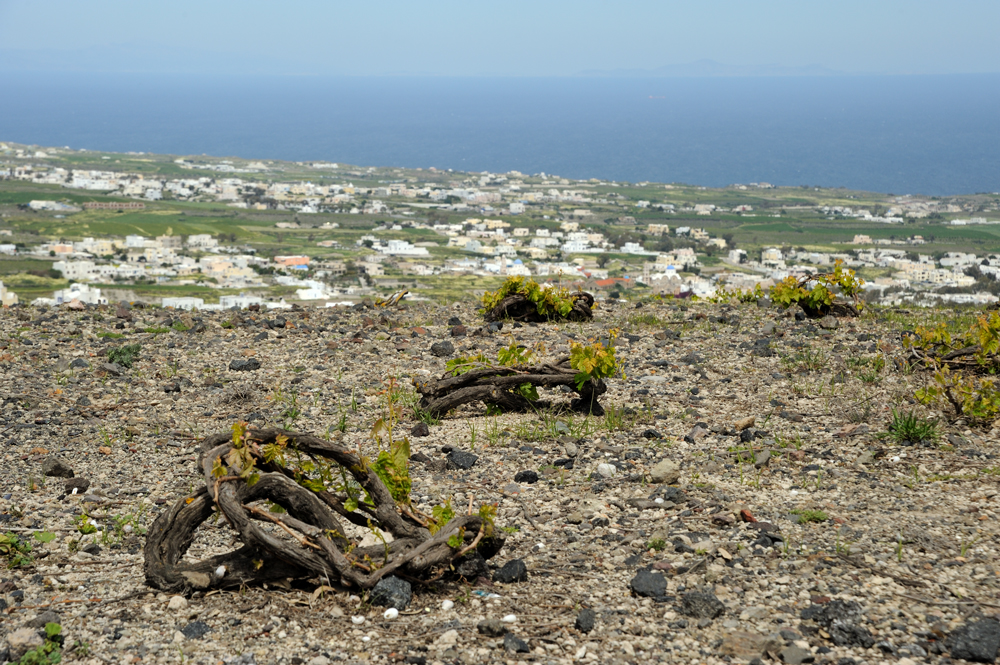
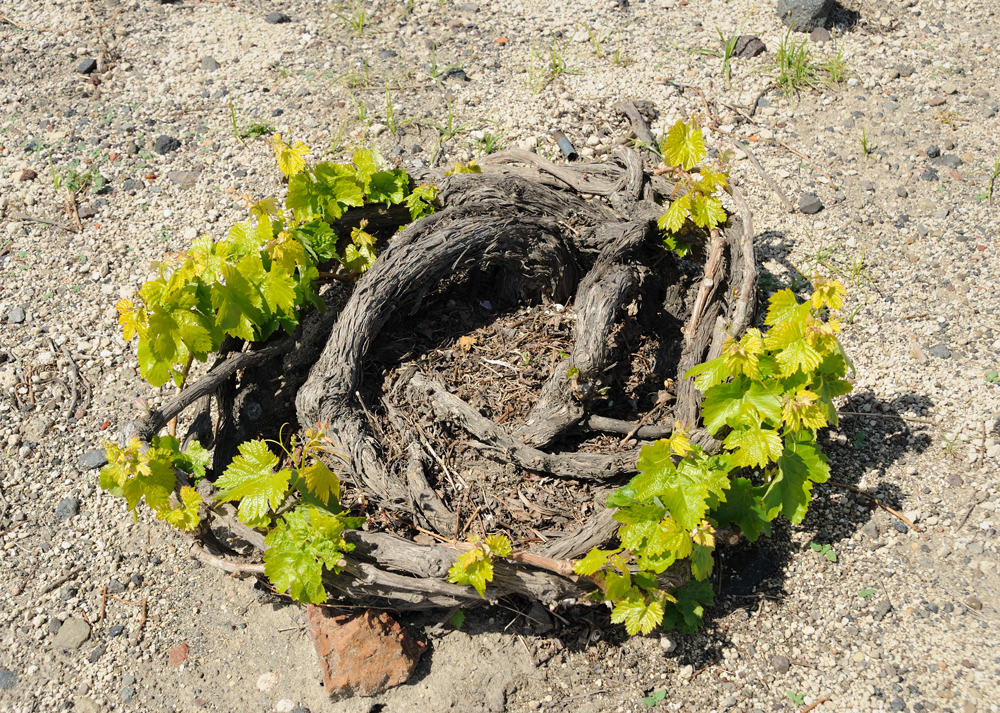
In the arid embrace of Santorini’s volcanic landscape, water scarcity and unique soil composition demand a robust and intricate root system for the vine’s sustenance. The continuous cultivation of this ancient vineyard is supported by the vine’s well-developed roots, which persist throughout its entire life, underscoring their critical role in the vine’s survival. The aerial section of the plant, over time, experiences a decline in berry yield. To rejuvenate and ensure continued vitality, winemakers initiate a meticulous process of cutting, prompting the growth of a new aerial part from the radical bud. The initial harvest following such rejuvenation typically occurs 2 to 3 years later. Remarkably, on Santorini, this rejuvenating cut is performed approximately every 75 years. Astonishingly, historical records attest to instances where this practice has been executed consecutively up to five times, resulting in some vines on the island boasting a century of existence. These centenarian vines stand as living testaments to Santorini’s viticultural legacy, making them the oldest vines globally.
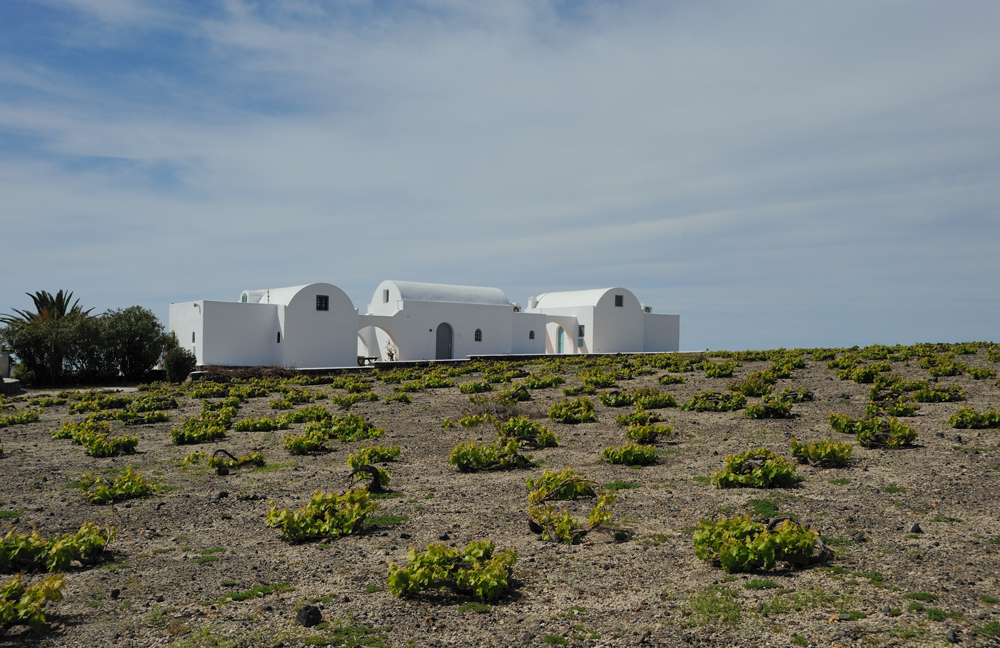
The vineyards of Santorini, bearing the weight of centuries, unfold as a chaotic tapestry where different grape varieties coexist without adherence to systematic planting. This historical neglect by past owners has led to a mesmerizing intermingling of varieties throughout the vineyards. Consequently, discerning the specific variety of a vine becomes a puzzle, often revealed only as the ripening process commences. This intricacy imparts a labor-intensive character to the harvesting process, demanding individual attention and care for each vine. The mechanical harvest, an efficient method in conventional vineyards, finds no place amidst the folded baskets of Santorini’s vines; here, the harvest is a painstakingly manual endeavor, a testament to the enduring traditions and unique challenges borne by the island’s ancient vineyards.
Varieties
In the heart of Santorini’s vinicultural legacy lies a palette of grape varieties as distinctive as the island itself.
Foremost among them is the venerable Assyrtiko. This ancient grape, originating primarily from Santorini, constitutes a staggering 70% of the island’s grape production. While it has found a home in other Aegean islands and mainland Greece, Santorini remains its birthplace. As a white grape, Assyrtiko boasts extraordinary qualities—a propensity for high sugar content, translating into elevated alcohol levels, and a remarkable retention of high acidity even upon full ripening. These characteristics enable the creation of vibrant dessert wines with a pronounced, saturated taste. Furthermore, Assyrtiko is the cornerstone for crafting full-bodied, dry wines distinguished by a luminous citric aroma and an underlying thread of minerality. They are good young, and ideal for ageing.
Complementing Assyrtiko are two additional white varieties with indigenous roots— Athiri and Aidani. When vinified independently, these grapes yield medium-bodied wines with delicately nuanced aromas. In contemporary winemaking, they find their place in both sweet and dry blends, harmonizing with the dominant Assyrtiko.
While white wines reign supreme on Santorini, pockets of red grape varieties contribute to the island’s viticultural mosaic.
Reviving from near extinction, Mavrotragano stands as an ancient varietal contributing to Santorini’s oenological renaissance. This grape imparts a deeply hued red wine characterized by robust tannins, making it an ideal candidate for oak aging. Mavrotragano finds expression in both dry and sweet wine productions, embodying a rare heritage.
Yet another ancient variety, Mandilaria , presents a medium-bodied red wine with a profound color profile. Its utilization extends to the production of sweet wines and as a component in thoughtfully crafted blends, weaving complexity into Santorini’s vinous narrative.
Wines
The most distinguished wines originating from Santorini encompass a spectrum of whites, spanning the realms of both sweetness and dryness.
Within the esteemed OPAP (Appellation d’Origine de Qualite Superieure) Santorini, three exemplary wines take center stage: Santorini, Vinsanto and Nykteri.
Santorini denotes the epitome of dry wines, crafted with a minimum of 75% Assyrtiko, complemented by Athiri and Aidani in a 25% blend. These full-bodied wines, distinguished by impeccable acidity and an intense flavor profile, boast an inherent capacity for graceful aging. Notably, the Assyrtiko grape exhibits a remarkable affinity for oak, prompting certain vintners to employ oak barrel fermentation methods.
Nykteri, translating to “nocturnal,” represents a dry white wine mirroring the varietal composition of Santorini. Historically, the grapes destined for Nykteri underwent nocturnal harvesting, ensuring an infusion of lightness and freshness. While contemporary winemaking has eased the constraints on nocturnal harvests, many vintners opt to preserve this tradition. Fermented in stainless steel cisterns, Nykteri undergoes a mandatory aging process in oak barrels lasting a minimum of three months, culminating in a wine of exceptional depth.
An illustrious creation with roots tracing back to antiquity, the sweet wine Vinsanto stands as a testament to Santorini’s winemaking heritage. Its global eminence was solidified during the Middle Ages when Santorini, under Venetian rule, witnessed the exportation of this wine to Europe. The nomenclature “Vinsanto” itself is a later adaptation of “Vino di Santo” (wines of Santorini), a designation bestowed upon it by the Venetians.
Vinsanto undergoes a meticulous production process, commencing with the late harvest of grapes followed by an additional sun-drying period spanning 12-14 days. Traditionally crafted as a “vin doux naturel” (naturally sweet wine; for insights into diverse approaches in sweet wine production, refer here), it boasts a minimum alcohol content of 9% abv. Alternatively, it can be fashioned as a “vin de liqueur” (a fortified wine), necessitating a minimum alcohol content of 15%.
With Assyrtiko constituting a minimum of 51% of the grape composition and the remainder shared between Athiri and Aidani, the maturation process unfolds in oak barrels for a minimum of 24 months. The culmination of this meticulous craftsmanship yields a resplendent golden-orange elixir, resonating with a rich aroma redolent of dried fruits, raisins, and sweet spices. Vinsanto stands as a golden testament to Santorini’s winemaking prowess, encapsulating the essence of its sun-kissed terroir in every sip.
Wineries
In spite of its modest dimensions, Santorini boasts plenty of wineries, each a custodian of the island’s vinicultural narrative. Regrettably, my sojourn allowed for the exploration of only two such establishments.
Foremost among them is Santo Wines , a colossus in both stature and repute.

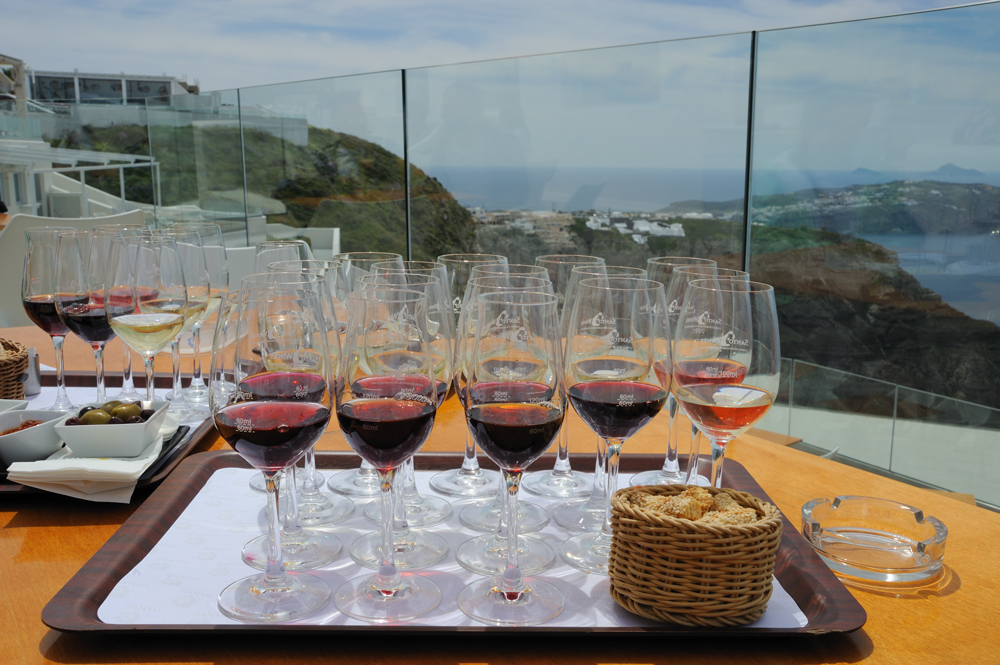
Widely acknowledged as the largest and most tourist-laden winery on the island, Santo Wines occupies a prominent place in guidebooks, perpetually drawing hordes of visitors. Offering an extensive array of up to 18 wine samples for tasting, Santo Wines, in my personal estimation, appears somewhat overhyped, a trait not uncommon in sprawling wineries. Most of the wines I sampled failed to leave a lasting impression.
Engaging in meaningful discussions about the wines proves challenging, echoing the trend prevalent in many large-scale wineries. Attendees are presented with a tray bearing glasses and a list of wines, left to their own devices amid the winery’s opulent decor and a copious selection of samples. It seems, in this instance, the emphasis is more on aesthetics and quantity of offerings rather than the nuanced quality and the allure of an intriguing tasting experience.
In stark contrast to the grandiosity of Santo Wines, the nearby Venetsanos unfolds as a distinct narrative. A mere 15-minute stroll from Santo Wines, Venetsanos offers a more intimate, cozier ambiance coupled with an erudite staff ever-willing to engage in discussions about wines and vinification techniques. Although the winery’s selection may be more limited compared to Santo Wines, the discerning quality of each wine is unmistakable.
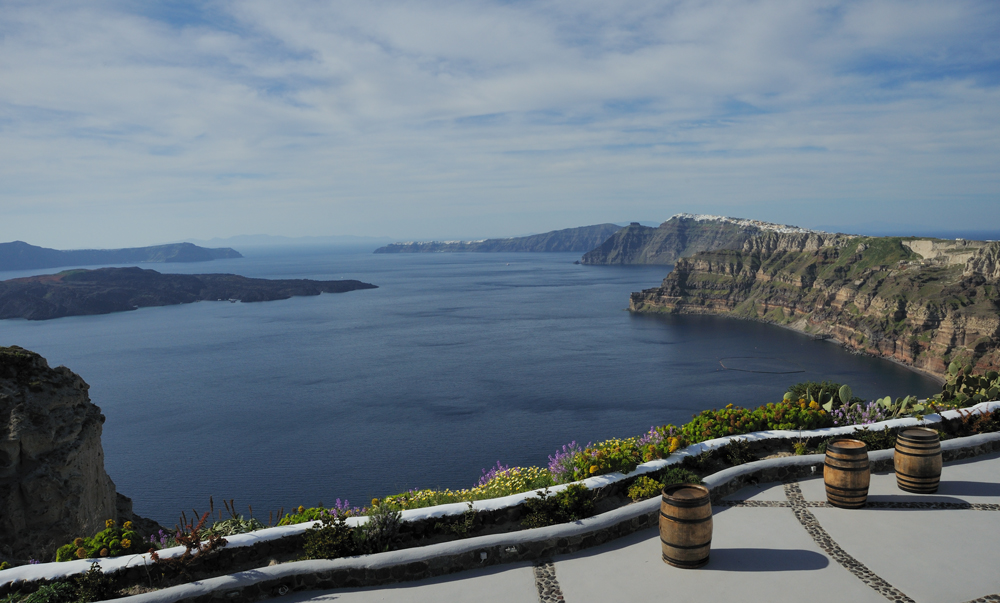
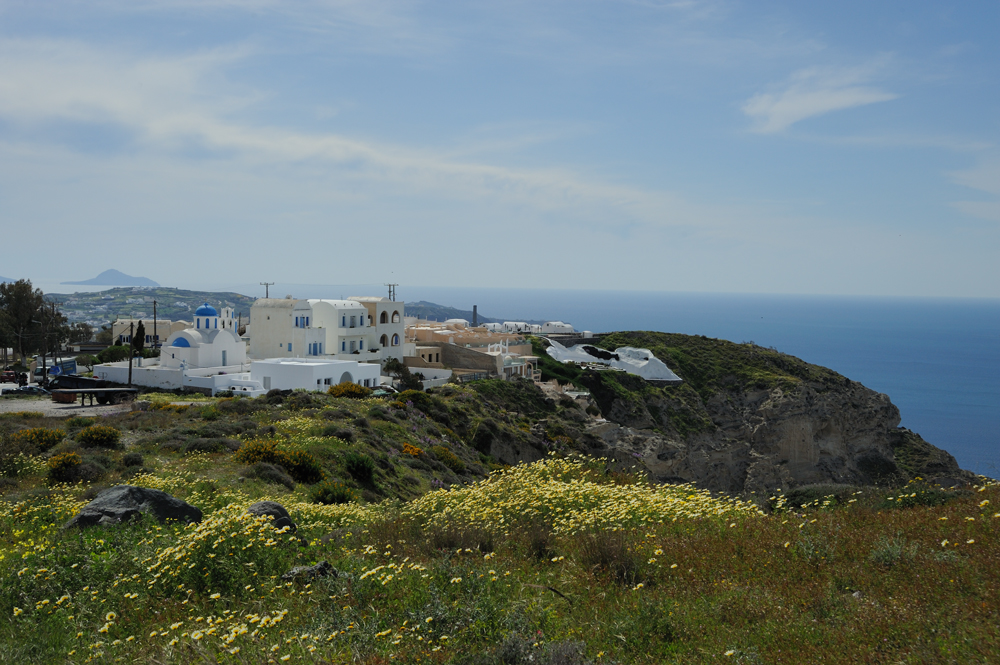
Noteworthy are the best-in-class Santorini and Nykteri, both crafted from 100% Assyrtiko. Additionally, Venetsanos presents an intriguing array of rose (ITG) and red wines, each contributing to the winery’s allure.
Beyond its exquisite wines and breathtaking vistas, Venetsanos houses a captivating museum. A pioneer of modern Santorinian viticulture, the winery was established in 1947 to cater not only to local demands but also for international export. Operating in an era devoid of electricity and efficient transportation, the winery and its vineyards perch atop a precipitous bluff, while the port, facilitating wine exports, lies just below.
Observe the sinuous road leading to the seaside; once a humble donkey trail, it now stands paved for modern vehicular use.
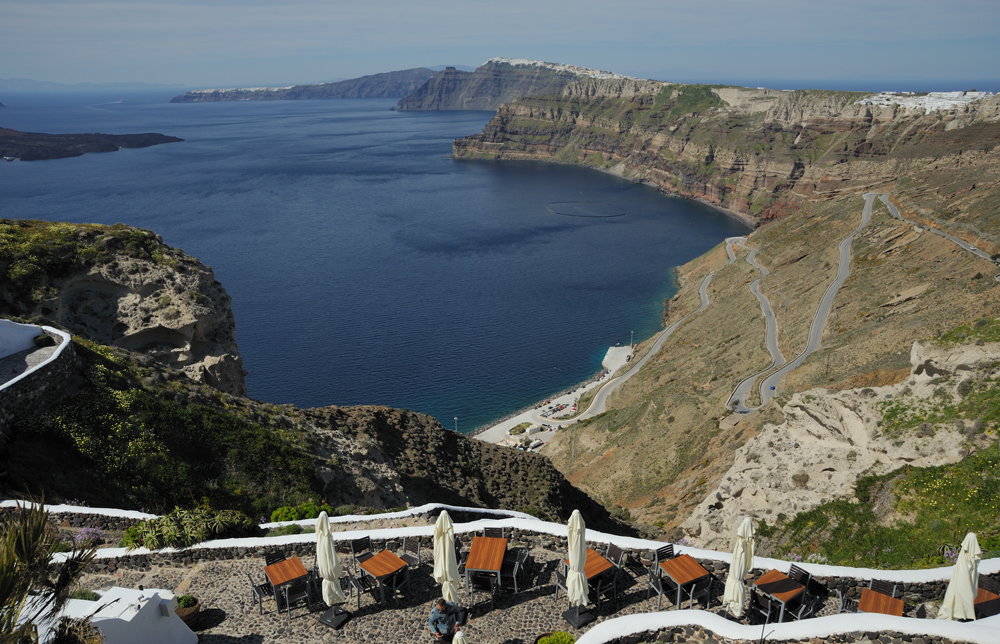
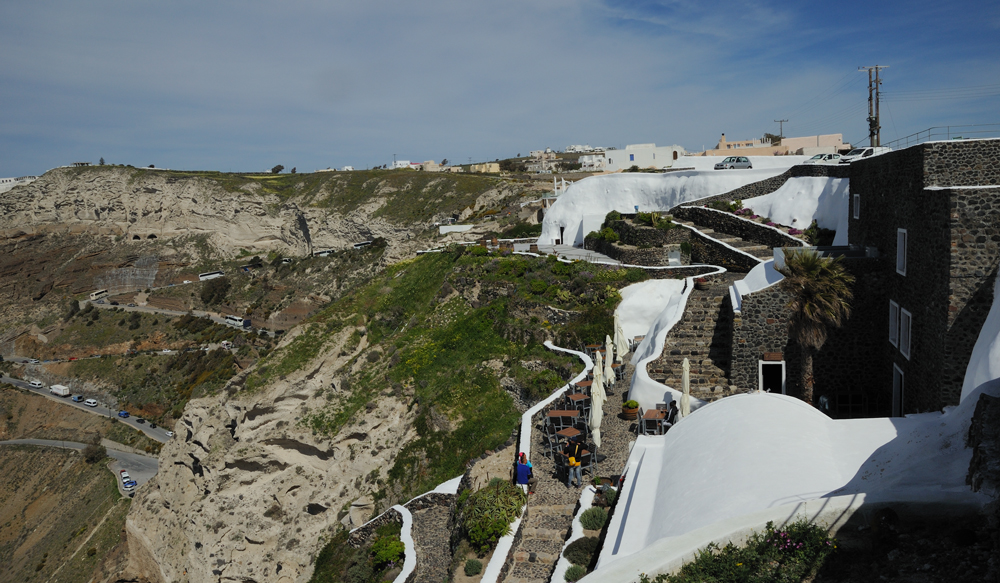
The winery’s architectural ingenuity is also worth noting. Constructed to accommodate substantial production volumes, the challenge of manually pumping wine from one large cistern to another was overcome by harnessing gravity. Every room, dedicated to successive technological steps, is strategically positioned below its predecessor, enabling the seamless flow of nascent wine under the influence of gravity.
Although modern technology now underpins winemaking processes, the legacy winery remains open for tours.
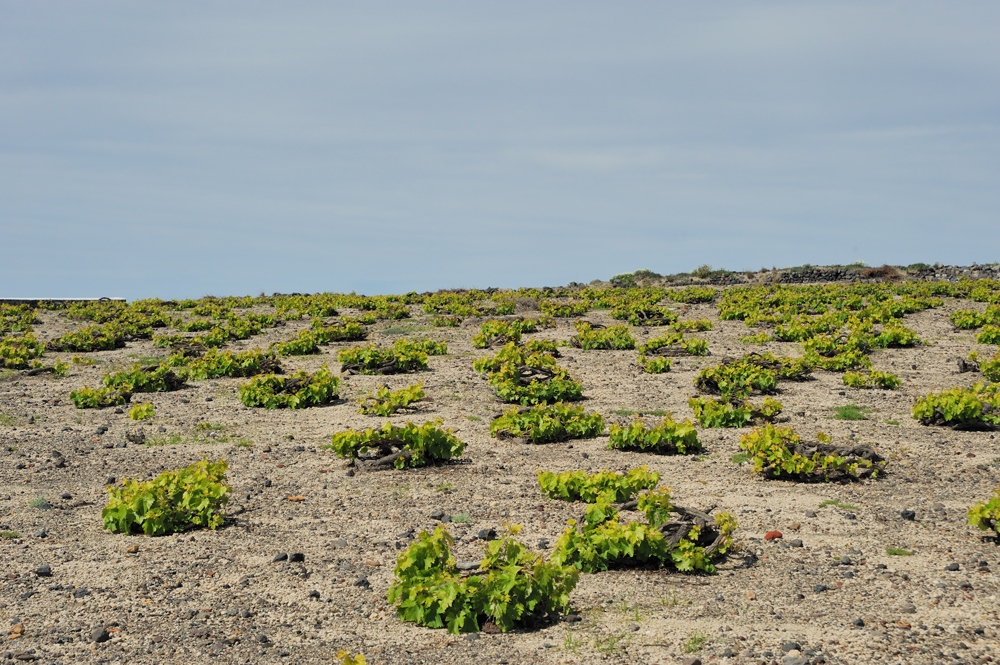
A visit to Santorini is incomplete without savoring its wines, an experience that can be extended beyond the island’s shores, as Santorini wines are readily available in stores worldwide.